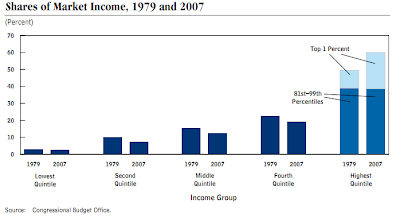Wednesday, November 23, 2011
Pompkin Pudding
This recipe for "pompkin pudding" in a crust comes from the first American cookbook, Amelia Simmon's American Cookery (1796). For more on the history of pie, see Pie-ology: A Full Filling Story at the Library Of Congress website.
Thursday, November 17, 2011
The data behind "We are the 99%"
As a rallying cry and internet meme, the slogan “We are the 99%” has spotlighted the Occupy movement’s protest against the political influence of the wealthy, and promoted empathy with stories of economic hardship. Underneath these figurative uses, the phrase is a reference to real data on increasing economic inequality in the United States.
Lane Library’s government documents collection is a good place to find that data. As a federal depository library, we receive print copies of government publications and facilitate access to materials published online.
Where to find income data:
These agencies have different data collection methods, each with its own limitations (hence the discrepancies).
These agencies have different data collection methods, each with its own limitations (hence the discrepancies).
- IRS Statistics of Income (SOI) Division (Call number: T 22.35/4)
In 2008, 20% of the total Adjusted Gross Income (AGI) went to the top 1%. (SOI Bulletin—Individual Income Tax Rates and Tax Shares, Table 5)
In 2008, 21.5% of aggregate income went to the top 5% of households. (Current Population Survey, Annual Social and Economic Supplement, Table H-2: All Races)
- Trends in the Distribution of Household Income Between 1979 and 2007 (a Congressional Budget Office report based on both Census and IRS data)
After-tax household income for the 1% with the highest income grew by 275%, compared to 62% growth overall. This growth disparity has increased income inequality.
In 2004, the top 1% held 33.4% of the nation’s wealth.
Tools for finding this information:
USA.gov. The official search engine for government publications.
FedStats. A portal to statistics from federal agencies.
American FactFinder. A database of census information.
OpenCRS.A searchable collection of Congressional Research Service reports that have been released to the public.
Thursday, November 10, 2011
3 fantastic databases of London crime, poverty, and social policy, 1674-1913
Ever wanted to know what the trial of a pirate would be like? Or exactly what crime do you have to commit to be drawn and quartered as punishment in the 17th century? Wonder no more! Old Bailey Online is, "a fully searchable edition of the largest body of texts detailing the lives of non-elite people ever published, containing 197,745 criminal trials held at London's central criminal court." An incredible resource that allows you to search by criteria such as: offence, verdict, sex and age of defendant and/or victim, punishment, and more! Gather statistics, read trial notes, and learn about adjudicating London's seedy underbelly!
A sister publication of the Old Bailey is the Ordinary of Newgate's Accounts and contains biographies of people executed at Tyburn. I know, it sounds pretty macabre, but it is "a valuable source of information about both elite attitudes towards criminality and the lives, attitudes, and dying behaviour of executed convicts. "
Need more biographical, primary documents? London Lives provides access to historical records containing over 3.35 million names from a wide range of primary sources about eighteenth-century London with a particular focus on plebeian Londoners. This resource includes over 240,000 manuscript and printed pages from eight London archives.
Have fun!
-Kate
Tuesday, November 1, 2011
Journey's End (1931)




The Ripon College Theatre department is presenting The Tempest starting tomorrow evening and running through Saturday. For more information, check: here.
The above images are from Journey's End, put on by the Mask & Wig theater club at Ripon, eighty years ago in 1931. For more images from Ripon's past, check out the digital collections made available through Wisconsin Heritage Online. You can find Ripon College's collections: here.
Subscribe to:
Posts (Atom)

